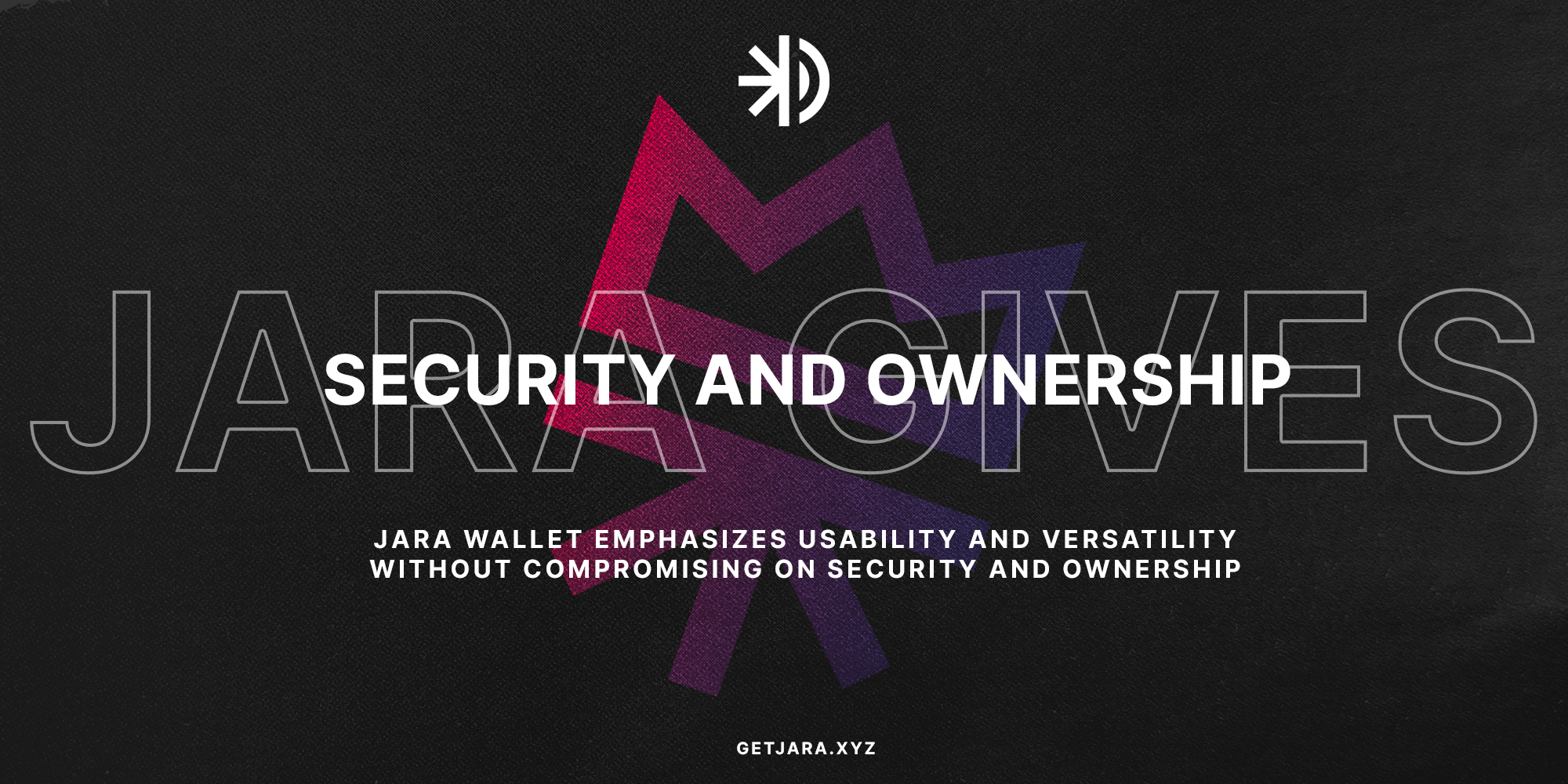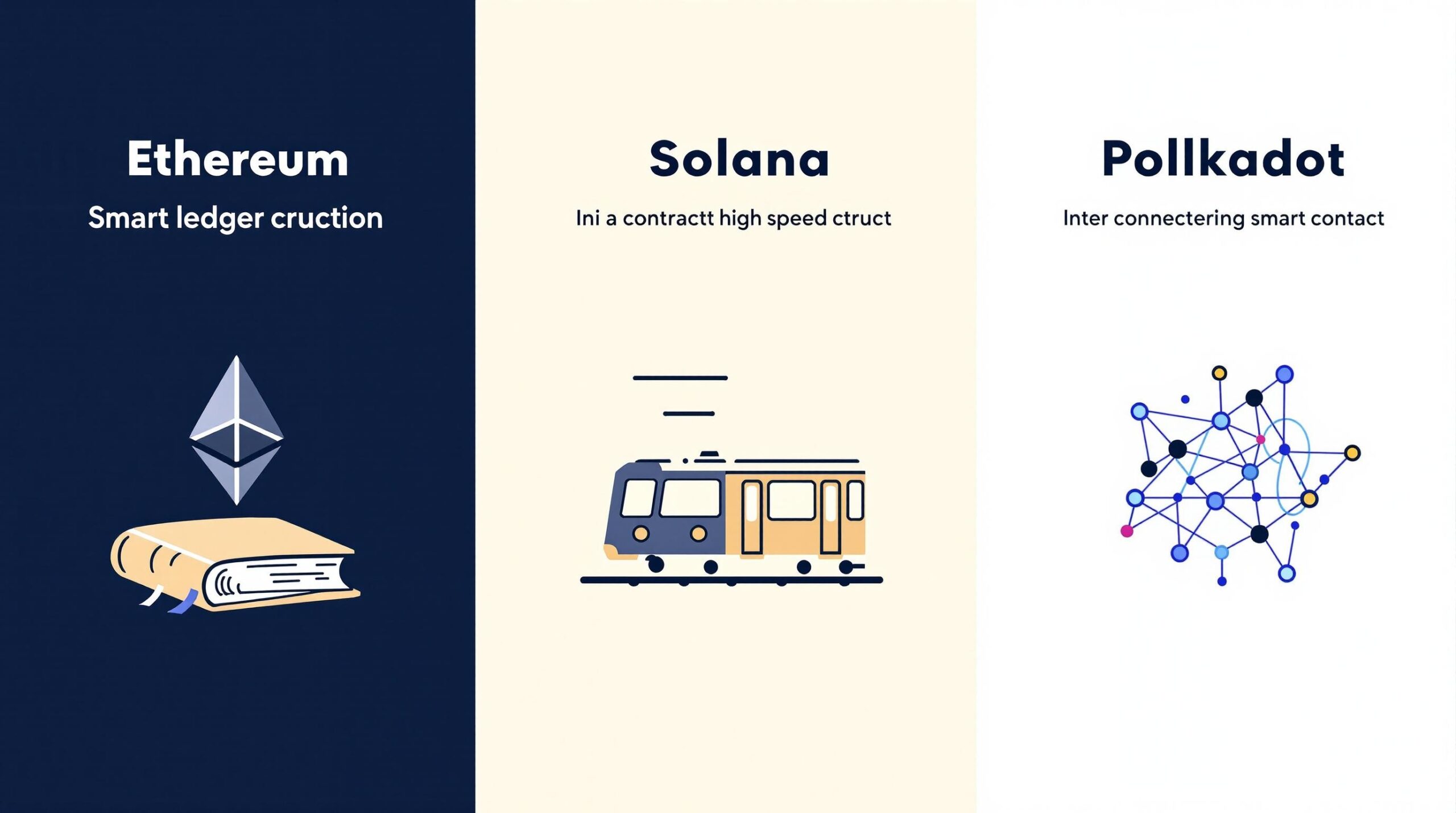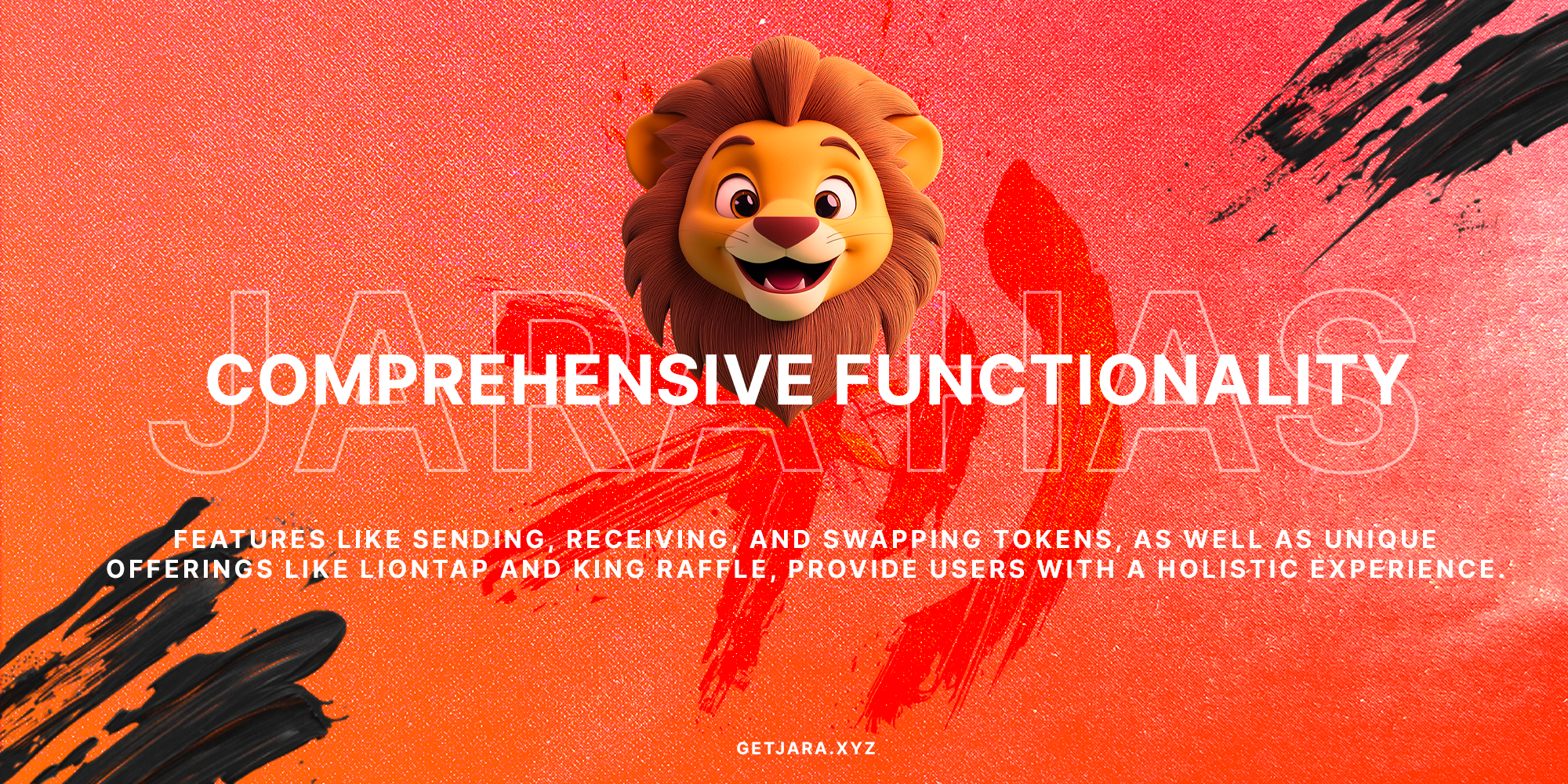Understanding Smart Contracts on Ethereum
Ethereum stands as the pioneering blockchain platform for smart contracts, offering a robust and versatile environment for developing decentralized applications (DApps). Its virtual machine, the Ethereum Virtual Machine (EVM), facilitates the execution of smart contracts leveraging Turing completeness. Ethereum’s smart contracts are made popular by Solidity, a contract-oriented programming language that supports complex logic, making it a go-to choice for developers building intricate applications.
Strengths of Ethereum Smart Contracts
- Proven track record: Ethereum has a long history and widespread adoption in the blockchain community, lending credibility and reliability to its platform.
- Large developer community: Ethereum boasts a vast developer community providing extensive resources, tools, and support, which makes it an ideal platform for innovative solutions.
- Interoperability: Ethereum smart contracts have interoperability with EVM-compatible chains, enhancing flexibility and adoption.
One of Ethereum’s key strength lies in its versatility, which is largely attributed to its programming language, Solidity. This language allows developers to implement complex business logic within their smart contracts, facilitating a broad range of applications. With Solidity, developers can create contracts for token standards (like ERC-20 and ERC-721), decentralized finance (DeFi) protocols, and even decentralized autonomous organizations (DAOs).
What is a smart contract on Ethereum? A smart contract on Ethereum is an autonomous program that automatically executes the terms and conditions encoded within it when predefined conditions are met.
Ethereum’s decentralized finance (DeFi) ecosystem has been at the forefront of innovation, leveraging its smart contract infrastructure. The flexibility of Ethereum’s programming environment enables developers to build an array of financial products, including lending protocols, decentralized exchanges, and yield farming platforms. As Ethereum continues to evolve, its capabilities expand, further solidifying its position as a leader in smart contract technology.
However, with complexity comes challenges. The Ethereum network has faced scalability issues, primarily due to its proof-of-work (PoW) consensus mechanism. Despite this, the introduction of Ethereum 2.0 promises to resolve these issues by transitioning to proof-of-stake (PoS), aiming to enhance scalability, reduce energy consumption, and improve transaction speeds.
Security Considerations in Ethereum Smart Contracts
- Immutability: Once deployed, Ethereum smart contracts are immutable, meaning any vulnerability or error cannot be corrected unless addressed through complex mechanisms like contract migration.
- Security best practices: With high-profile incidents such as the DAO hack and Parity wallet issues, it’s critical for developers to adopt secure coding practices to prevent vulnerabilities such as reentrancy attacks and integer overflows.
- Audit importance: Conducting thorough security audits is essential to mitigate risks and ensure the integrity of smart contracts.
“Smart contracts are the future of compliance and transparency,” states an industry expert. Their deployment on blockchains like Ethereum ensures an unchangeable record of transactions and fulfillment of rules without intermediaries.
Security remains a paramount consideration for developers utilizing Ethereum smart contracts. The immutable nature of these contracts means any security lapses can have significant consequences. Hence, developers are encouraged to perform comprehensive audits and utilize formal verification methods where possible. Such practices help identify potential vulnerabilities, ensuring the contract code is robust and secure.
Ethereum’s transition towards Ethereum 2.0 marks a significant milestone in its journey, set to address previous scalability challenges while maintaining its role as a primary platform for decentralized applications. This evolution supports Ethereum’s broader mission of enabling an open financial system, promoting innovation, and fostering a more inclusive digital economy.
Looking ahead, the continued advancements in Ethereum’s capabilities, alongside the growth of its ecosystem, highlight its enduring relevance in the blockchain space. As Ethereum adapts to new technologies and frameworks, it prepares not just for the needs of today but also for the demands of tomorrow’s decentralized world.
Solana’s Approach to Smart Contracts
Solana has emerged as a top competitor through its focus on speed and scalability. Its smart contracts leverage the Solana Virtual Machine (SVM), which uses Turing-complete programming, and unique consensus algorithms like Proof of History (PoH) to enhance transaction throughput.
Key Advantages of Solana
- High transaction speeds and low costs: Solana’s network can process thousands of transactions per second due to its innovative use of the Proof of History consensus mechanism, which timestamps transactions to verify their order and improve processing efficiency.
- Efficient parallel execution with the Sealevel engine: The Sealevel engine enables simultaneous transaction processing across different smart contracts, increasing the throughput to accommodate a broad range of decentralized applications (DApps), including complex DeFi and NFT projects.
- Growing NFT and DeFi ecosystems: Solana supports a vibrant community of developers and users who are contributing to its rapidly expanding ecosystem. For instance, the integration of NFT marketplaces and financial platforms underlines Solana’s capability to foster innovation across various industry sectors.
What is Solana’s Sealevel? Solana’s Sealevel is a parallel transaction processing engine that enables simultaneous execution of smart contracts, significantly enhancing throughput and efficiency.
Solana’s architecture is designed to anticipate the needs of decentralized application developers by reducing overhead costs and processing time, making it favorable for gaming applications and other resource-intensive operations. With tools and frameworks like Anchor, which supports streamlined app development, developers can leverage Solana’s capabilities to push the blockchain frontier forward.
“Solana: Fast, Secure, and Scalable” – Discover the power behind one of the most efficient blockchains that is redefining how we perceive decentralized applications today.
The Solana ecosystem is particularly appealing for its fast-growing number of DeFi applications. For example, the decentralized finance sector benefits greatly from Solana’s ability to offer smart contracts that are both low cost and efficient. Developers have been increasingly attracted to the platform due to its innovative solutions to common blockchain issues, such as high costs and slow transaction speeds associated with other networks. By focusing on these core elements, Solana continues to attract developers aiming to build seamless and scalable applications.
Challenges Facing Solana
- Network congestion concerns: Despite its high throughput, Solana occasionally faces congestion issues, especially during high demand periods or massive DApp launches. Strategies are continually being developed to address this, ensuring long-term sustainability and reliability.
- Decentralization levels: Although Solana has a robust and efficient network, critics argue that its level of decentralization is less than that of older, more established blockchains like Ethereum, which may impact its governance and security dynamics.
As Solana continues to refine its capabilities, it offers a compelling option for those looking to leverage the speed and efficiency necessary for smart contract-based applications that demand quick and secure execution. The ongoing growth and development within the network signal its potential to power a significant portion of the digital landscape, particularly within the African markets, where Solana’s efficiency and affordability can greatly benefit burgeoning financial technologies.
“Jara – Investing in the Future of Africa’s Digital Economy” – Envision a financial revolution that positions Africa at the forefront, fueled by technologies like Solana’s high-performance blockchain.

Examining Smart Contracts on Polkadot
Polkadot has emerged as a frontrunner in the blockchain ecosystem, particularly notable for its innovative multi-chain architecture. This design allows different blockchains to operate seamlessly together, offering unique opportunities for smart contract development. But what exactly makes Polkadot’s approach to smart contracts stand out?
Unlike other blockchains that function in isolation, Polkadot leverages cross-chain compatibility through its multi-chain design. This design consists of a primary relay chain and multiple parachains, enabling interoperable communication among varied blockchain networks.
Polkadot’s Unique Features
- Cross-chain compatibility with shared security: By providing a secure base layer, the relay chain ensures that all connected parachains benefit from the same high-security standards, crucial for reliable smart contract execution.
- Specialized parachains with diverse functionalities: Each parachain can be optimized for specific functionalities, ranging from privacy-enhanced transactions to high-speed DeFi applications. For instance, parachains like Moonbeam offer compatibility with Ethereum’s EVM, allowing for existing applications to migrate with ease.
- Flexible development with the Substrate framework: Substrate offers developers a robust toolkit to build custom parachains tailored to specific needs, utilizing programming languages such as Rust and Go, empowering developers to innovate with fewer restrictions.
This ability to create specialized environments within Polkadot’s architecture is akin to customizing a toolbox for specific tasks, rather than using a one-size-fits-all hammer. It allows developers to optimize for requirements such as speed, security, or compatibility, ultimately enhancing the blockchain’s versatility.
Can Polkadot’s unique architecture enhance smart contract functionality? Yes, by facilitating cross-chain operability and offering customizable parachains, Polkadot significantly enhances the versatility and efficiency of smart contracts.
Moreover, Polkadot’s interoperability means that smart contracts can interact not only within its ecosystem but also with other blockchains. This cross-chain functionality positions Polkadot as a pivotal component in a multichain future, bridging disjointed blockchain systems into a unified network.
In the context of Africa’s burgeoning digital landscape, platforms like Jara see immense potential. By integrating with Polkadot’s infrastructure, African financial services can transcend traditional barriers, offering seamless cross-border transactions and more inclusive financial tools.
With Polkadot’s approach, smart contracts are no longer confined to a single blockchain’s limitations. Instead, they can tap into a vast network of assets and data, echoing the collaborative spirit of a digital frontier. This paradigm shift opens up new vistas for decentralized applications, propelling a new wave of innovation across industries.
Ultimately, choosing a blockchain infrastructure such as Polkadot could be pivotal for projects seeking interoperability and innovation. As Polkadot continues to evolve, it may play a crucial role in reshaping how smart contracts function globally, creating a fertile ground for cutting-edge applications and solutions.
Exploring Smart Contracts on Polkadot
Polkadot is gaining attention for its unique architecture that enables interoperability among different blockchains. This technology allows various chains to communicate seamlessly, fostering a cooperative blockchain ecosystem. At its core, Polkadot uses a system of a relay chain and parachains, each playing a distinct role in maintaining efficiency and scalability. While the relay chain ensures shared security and handles the consensus, parachains are independent blockchains that can be tailored for specific use cases, supporting a variety of decentralized applications (DApps).
Distinct Features of Polkadot
- Focus on Interoperability: Polkadot is designed as a multi-chain platform, capable of enabling interoperability across numerous blockchains. Through its innovative architecture, Polkadot acts as a foundational layer supporting the seamless transfer of assets and data between different systems.
- Variety of Supported Programming Languages: Developers can write smart contracts using diverse programming languages such as Ink!—which is Rust-based and particularly adapted for Polkadot—and compatibility with Ethereum’s EVM provides even more flexibility through Solidity, enhancing cross-platform development.
- Strong Emphasis on Security: By using a shared security model, Polkadot enhances the protection of all interconnected parachains, ensuring the integrity and trustworthiness of the entire network. This model supports a unified layer of security, crucial for maintaining network reliability.
Polkadot’s flexible nature and strategic focus on inter-chain interoperability make it an attractive choice for developing smart contracts. By bridging previously isolated blockchains, Polkadot paves the way for new use cases, particularly in places like Africa, where the need for innovative financial solutions is paramount.
The vast potential of Polkadot lies in its ability to seamlessly connect diverse blockchain environments, offering a versatile and secure platform for cutting-edge DApp development.
In addition, projects like Moonbeam and Astar Network, operating as parachains, illustrate Polkadot’s versatile capabilities. Moonbeam, for instance, is an Ethereum-compatible parachain supporting Solidity smart contracts, enabling developers to leverage existing Ethereum tools and libraries. Meanwhile, Astar is notable for supporting EVM and WebAssembly (Wasm) smart contracts along with cross-consensus messaging (XCM).
Jara encapsulates similar innovation, providing substantial insights and utilities while bridging global capital to African assets through its $JARA token.

What sets Ethereum smart contracts apart from others?
Ethereum smart contracts are distinguished by their Turing completeness, which allows developers to implement complex logic. Furthermore, Ethereum boasts a large developer community that continuously evolves its ecosystem, maintaining Ethereum’s position as a leading platform for innovative decentralized applications.
How does Solana achieve high transaction speeds for smart contracts?
Solana achieves high transaction speeds through its unique Proof of History (PoH) consensus mechanism. This allows simultaneous processing of numerous transactions, enabling smart contracts to be executed swiftly. Solana’s Sealevel engine also facilitates efficient parallel execution, enhancing overall platform performance.
Is Polkadot’s parachain model beneficial for smart contracts?
Yes, Polkadot’s parachain model offers significant benefits for smart contracts by enabling interoperability and specialized functionality across various chains. Parachains allow developers to customize environments and programming languages, providing versatility and adaptability for emerging technologies.
What is the role of security in Polkadot’s smart contracts?
Security is pivotal in Polkadot’s smart contracts, emphasized through its shared security model. This framework ensures that all parachains adhere to rigorous security protocols, protecting assets and operations across interconnected networks, preserving data integrity and user trust.

Related Practice Areas
Explore other areas of our expertise that are intricately linked with the nuances of blockchain smart contracts and automation.
Hear From Our Satisfied Clients
At the forefront of our Smart Contracts & Automation practice is an unwavering commitment to client satisfaction. Every case is handled with utmost care, as echoed in the appreciative feedback from those we serve.

Unlock the Future of Your Investments with Jara
In the dynamic world of blockchain technology, choosing the right platform can make all the difference in optimizing your smart contracts and making the most of your investments. That’s where Jara comes into play. We bridge global capital to African assets, ensuring you get the best out of Ethereum, Solana, and Polkadot.
“Your investments deserve nothing less than the best. With Jara, you’ll experience unparalleled expertise in navigating the blockchain realm.”
- Personalized Guidance: Our experts offer tailored advice that suits your unique investment needs.
- Innovative Solutions: We provide cutting-edge tools and insights to empower your decisions.
- Global Reach: Benefit from our extensive network and vast experience in the blockchain ecosystem.
Ready to take your investments to the next level? Download the Jara app for Android or get it on your iPhone today and start your journey towards smarter investing.
Don’t just take our word for it. Reach out to us today and witness our expertise for yourself.
For more details, visit us at www.getjara.xyz or email us at [email protected].
Ethereum vs. Solana vs. Polkadot: Which Blockchain Has the Best Smart Contracts?
Understanding the Basics: What Are Smart Contracts?
Smart contracts are self-executing contracts with the terms of the agreement directly written into lines of code. They reside on a blockchain and automatically enforce and execute actions: reducing the need for intermediaries.
Ethereum: The Pioneer of Smart Contracts
- Developer Adoption: Ethereum has the largest community of developers actively building dApps.
- Flexibility: Solidity, Ethereum’s programming language, enables complex smart contract creation.
- Network Congestion: High traffic often leads to expensive transaction fees.
“Ethereum remains the gold standard in smart contract platforms due to its robust ecosystem and widespread adoption.”
Solana: High-Speed Transactions and Scalability
- Speed: Processes over 65,000 transactions per second, significantly faster than Ethereum.
- Cost-Effective: Extremely low transaction fees make it appealing for developers and users.
- Growing Ecosystem: Rapidly expanding developer community and resources.
“Solana’s breakthrough scalability sets it apart from many competitors in the blockchain space.”
Polkadot: Interoperability and Innovation
- Parallel Transaction Processing: Unique architecture allows multiple chains to operate simultaneously.
- Interoperability: Facilitates communication between diverse blockchains, offering versatile use cases.
- Governance System: Community participation is encouraged through an innovative governance model.
“Polkadot opens the door to a truly decentralized web, integrating multiple blockchains into one cohesive network.”
Comparative Analysis: Key Features and Performance
| Feature | Ethereum | Solana | Polkadot |
|---|---|---|---|
| Transaction Speed | ~14 TPS | 65,000+ TPS | Varies (Parallel Processing) |
| Transaction Cost | High | Low | Moderate |
| Ecosystem Size | Large | Growing | Emerging |
| Interoperability | Limited | Moderate | High |
Conclusion: Which Blockchain is Right for You?
Choosing the right blockchain for smart contracts often depends on specific needs and use cases. If interaction with a large developer community is a priority, Ethereum remains unmatched. For speed and cost efficiency, Solana holds an edge, whereas Polkadot offers unparalleled potential through its interoperability and governance features.

















